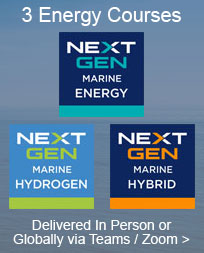Hans van der Molen - Head of Technical Projects & Innovation, KNRM (Royal Netherlands Lifeboat)
Hans has been working for the Royal Netherlands Sea Rescue organisation for over 27 years as technical superintendent, where he is currently in charge of a small team which is responsible for technical projects and technical innovation.
Hans started his career in the merchant navy as one of the first ships engineer / navigation officer generation. After being stationed 2 years in Japan and Korea as part of a new building team for container vessels and a career at sea for almost 9 years, Hans decided to join the lifeboat services, combining best of both worlds, working in a maritime environment, while being able to live ashore.
Over the last couple of years Hans has gained in depth knowledge on the subjects of Whole Body vibration and Repeated Shock which helps KNRM to provide maximum care for their lifeboat crews.
Comparing Innovative and Traditional Lifeboat Design - Nh1816 & Arie Visser Class
In 2014 the Royal Netherlands Lifeboat Institution (KNRM) built Nh1816, a prototype of a new class of lifeboats. Main objectives were firstly to increase crew comfort by reducing the wheelhouse noise level and reducing vertical acceleration. Secondly, to implement a “glass bridge” so the complete ship can be operated from the wheelhouse with maximum redundancy, Thirdly, be ready for future developments.
Due to the design of the hull, derived from the Axe Bow, the reduction of vertical acceleration has been achieved, although operating the boat with more controls than just throttle and buckets (waterjet driven boat) needs a lot of training. The 19 metre Nh1816 has retractable fins for course stability and interceptors with which the trim of the boat can be controlled. Also transit into heavy seas with an Axe Bow design ship is basically different from sailing on the 19 metre RIB, ‘Arie Visser’ class. Due to these factors it is difficult to determine whether, when sailing into heavy seas, reduction of vertical acceleration is really achieved.
Nh1816 has a bigger lateral surface due to its Axe Bow. Preliminary findings are that an increase in lateral acceleration is being observed. KNRM therefore decided to compare both vertical and lateral accelerations of Nh1816 and Arie Visser class. Two ships of Arie Visser class and Nh1816 have been fitted out with accelerometers. When the opportunity arises, test runs will be carried out with various coxswain behind the wheel. Speed, course, sea state etc will be recorded, as well as position of fins and interceptors of Nh1816.
The ultimate goal is not just to compare vertical and lateral accelerations, but to devise the optimum way to control Nh1816 in heavy seas and increase crew comfort. Although KNRM is convinced that Nh1816 outperforms Arie Visser Class regarding vertical accelerations, the proof of the pudding will be in the eating.











